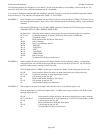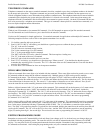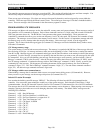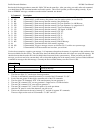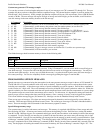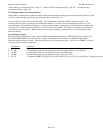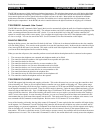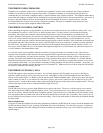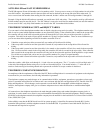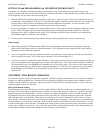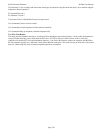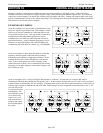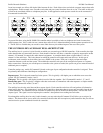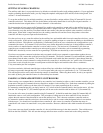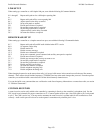
Pacific Research Solutions RI-300e User Manual
Page 116
TELEPHONE USER COMMANDS
Telephone user commands are the same as “standard user commands” but they allow a method to pass along a telephone
number to be checked by both the accept and reject tables. Telephone commands are executed by names just like user
commands but you can include a telephone number or auto dial number along with the command. The telephone number that is
entered with the telephone command will be checked by the accept and reject table before the associated macro is processed. In
the macro data, the telephone off-hook S-Command 82 must be included for the macro to operate correctly. On-hook
S-Command 820 does not have to be called by a telephone command. This type of command is better placed as a user
command as it does not require telephone number information.
TELEPHONE INCOMING CONTROL
When controlling the repeater over the telephone, you do not have an un-key function as you would have with a radio. Also,
most telephones do not have “A,B,C,D” keys as used with most radios. For these reasons, we have used the following
procedures: After keying the command, wait for the inter digit timer to expire (S-Command 16), the default time is 3.5
seconds. When this timer expires, the controller will attempt to process the command. You can also terminate the command
with a “# #” and the controller will process the command immediately. When controlling over the telephone line, you can
connect to the radio using the off-hook command and hang up using the on-hook command. When commands are coming from
the telephone and radio at the same time, the source of the first digit will cause the controller to continue receiving digits from
the same source. Be careful when unlocking the controller over the telephone during the time that the repeater is in use. If a
user were to send a DTMF tone set over the repeater that might be interpreted as an S-Command, the controller will process it
as an S-Command, with indeterminate results.
You can only control via the telephone when the controller’s incoming call modes are 2 through 4 and 6. The call must
originate to the controller and the control mode must be entered before a repeater user answers the call. When you want to
control over the telephone, you must call the controller. The controller will answer the call and provide a ring message or
greeting. During this time and before the incoming call control password timer expires (S-Command 73) you must send the
telephone incoming control access password (S-Command 57). Once the controller has accepted this password, you are in the
user command control mode. You can send user commands, including telephone off and on hook commands. At any time, you
can also unlock the controller with the unlock password (S-Command 55). Make sure that you lock the controller and send the
on hook user command before ending your call.
TELEPHONE OUTGOING CALLS
The RI-300 supports various outgoing call modes. You can limit outgoing calls all together, set up calls for half duplex
operation, duplex operation, privacy, and with a cover tone. Half duplex is used to mute the telephone audio when there is
activity on the repeater input. Use duplex to mix the repeater audio with the telephone audio. In the privacy mode, the repeater
audio is muted over the air. Cover tone mode is the same as privacy, plus a tone is added over the air when activity in on the
repeater receiver. In both of these modes, other people monitoring the repeater would only hear the telephone audio. There are
various timers that can also be set to limit the maximum length of the call.
Account Codes
The RI-300 can be set up to use up to eight different access and account codes. The access codes are used to access outside
lines when connected to a PBX or special telephone system. They can also be used to access special long distance carriers or
turn off call waiting. When the RI-300 dials a telephone number, it first dials the access code than an auto dial number if used,
than any numbers that were added to the end of the auto dial, then finally the account code, if available. The account code can
be used with special long distance carriers or credit card calling. The account code number is dialed after the telephone number
has been dialed.
Shared telephone line
If you plan to share the telephone line with other equipment or telephones, the RI-300 can be set up to check the telephone line
for dial tone before dialing. Do this by setting S-Command 90 to zero (Auto Detect). If no dial tone is present, or someone is
talking on the telephone line when sending the off-hook command, the controller will give you a 30 second busy signal on the
repeater output.



